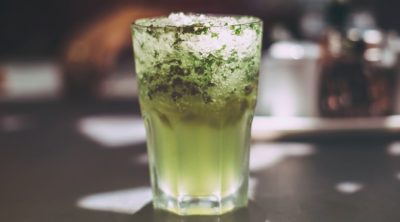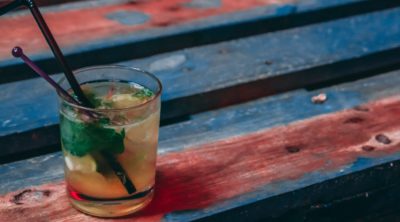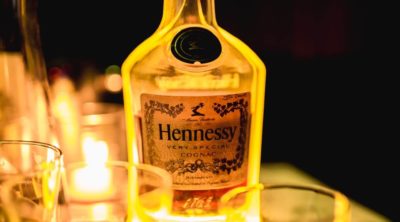
Have you ever enjoyed a glass of absinthe? Do you know the traditional method of drinking it? This drink is traditionally prepared and enjoyed according to the absinthe ritual. This article explains the ritual and the mysterious effects of this drink.
Absinthe, an anise-flavored spirit, is a highly alcoholic beverage derived from herbs. It is made from the flowers and leaves of the herb artemisia absinthium, also known as ‘grande wormwood’. Traditional absinthe has a natural green color, but it can be colorless too. In historical literature, it is referred to as “la fée verte” (the Green Fairy). The French doctor, Pierre Ordinaire, prepared this beverage as a digestive tonic during the 18th century.
Absinthe gained popularity in France during the 19th century. It was consumed by artists and writers such as Edgar Allan Poe, Vincent van Gogh, Oscar Wilde, and Ernest Hemingway. Thereafter, taking into consideration the devastating effects of this alcohol, drinking absinthe was banned. In 1990, it was legally allowed to be produced and sold in the countries of the European Union. Today the beverage is available in almost all countries where alcohol can be sold. There are different types of absinthe formulated with different types of herbs. Some are authentic and of higher quality than others.
Choosing the Best Quality
Authenticity: Always purchase absinthe that has been produced by reputable, renowned, traditional European distillers. France, Spain, Switzerland, and the Czech Republic are well-known for their authentic, high quality absinthe. This drink can be made from different ingredients by following different methods. You should check the percentage of thujone in it–according to international standards, alcoholic beverages that contain greater than 25 percent alcohol by volume, should not contain more than 10 mg/kg thujone. Bitter spirits may contain up to 35 mg/kg thujone. Absinthe, labeled as ‘bitter’, may contain 10 to 35 mg/kg thujone. It is illegal to use thujone as a food additive in the United States. Authentic absinthe with negligible amounts of thujone can be legally sold in the US. Vintage bottles of pre-ban absinthe are still sold, and it is observed that some of the lesser quality versions contain abnormally high levels of thujone and harmful adulterants such as copper salts, aniline dye, and antimony trichloride, which has led to the drink’s poor reputation.
Louche Effect: When you add ice water to absinthe, it should gradually demonstrate increasing turbidity (opaqueness). This is known as the louche effect, which is produced by the precipitation of the herbal essential oils. The drink should not turn opaque rapidly. The louche effect is primarily produced by the herbs anise and fennel. It is possible that absinthe made from other herbs may not turn opaque.
Ingredients: Authentic absinthe is always made with whole, natural herbs and does not contain any artificial ingredients. The chlorophyll extracted from herbs gives it the pale green color. Bright green absinthe may be artificially colored. Good quality absinthe can be clear, orange, or red, but the color must be naturally imparted by herbal ingredients like petite wormwood. Vintage absinthe generally has an amber color, as the chlorophyll fades over time. Remember, making absinthe is dangerous and is not recommended.
Alcohol Content: Absinthe having 45-68 percent alcohol by volume is considered the best tasting absinthe. The high alcohol content is not considered excessive, as the drink is always diluted with water before drinking. When you sip absinthe slowly, the effects of alcohol do not ruin the subtle and pleasant effects of the herbs.
Ritual
There are various traditional and non-traditional ways of preparing this drink. Innumerable varieties of absinthe spoons and absinthe glasses are available for the same.
Classic French Ritual
- Pour about one ounce (30ml) of absinthe into a glass. French absinthe glasses, like widely styled reservoir pontarlier glasses, are suitable for the French absinthe ritual. This type of glass will have a distinct bottom area that indicates the amount of alcohol to be poured.
- Some like to drink it with sugar. The sugar balances the bitter taste of the wormwood. Lay a flat, perforated absinthe spoon across the rim of the glass. Place a single cube of sugar on the perforated area of the spoon.
- You are supposed to drip pure ice-cold water into the alcohol from a small pitcher. This slow addition of cold water is an essential and artistic part considered the heart of the ritual. It can be done with or without sugar. If you want to use sugar, the cold water is dripped over the sugar cube placed over the spoon. This makes the sugar slowly dissolve into the drink. High quality absinthe can be expertly sipped simply with the ice-cold water.
- After you finish adding water, stir the drink with the absinthe spoon. If you wish, you may add two or three ice cubes to the finished drink, but those following the traditional way might frown upon this practice.
Useful Tips
- Three to four ounces of water should be added to one ounce of absinthe.
- As you add water to the drink, check for the louche effect.
- If you want, you can add ice cubes to the water in the pitcher; but take care that they don’t fall into the glass.
- If you want to use brouilleur devices to automatically drip the water into individual glasses, then place the device over the glass and add water, ice, or ice water and sugar to it. Remove the brouilleur and your drink is ready.
This drink acts as a stress reliever. The thujone plays an important role in exhibiting the mysterious effects of absinthe. Due to the hallucinogenic effects on the human mind, governments banned it in 1915. According to scientific studies, thujone can have effects similar to those produced by tetrahydrocannabinol (THC), the main chemical found in marijuana. Absinthism, or absinthe abuse, may lead to the development of seizures, impairment of speech, sleep disorder, and both auditory and visual hallucinations. Some people, on the other hand, believe that absinthe helps awaken the subconscious mind. Many also believe that absinthe alters perception and cognitive abilities. All these effects are not scientifically proven. Thujone in large doses can produce muscle spasms and convulsions. But, the herb wormwood plays the role of a painkiller and is known for its anti-parasitic effects.


